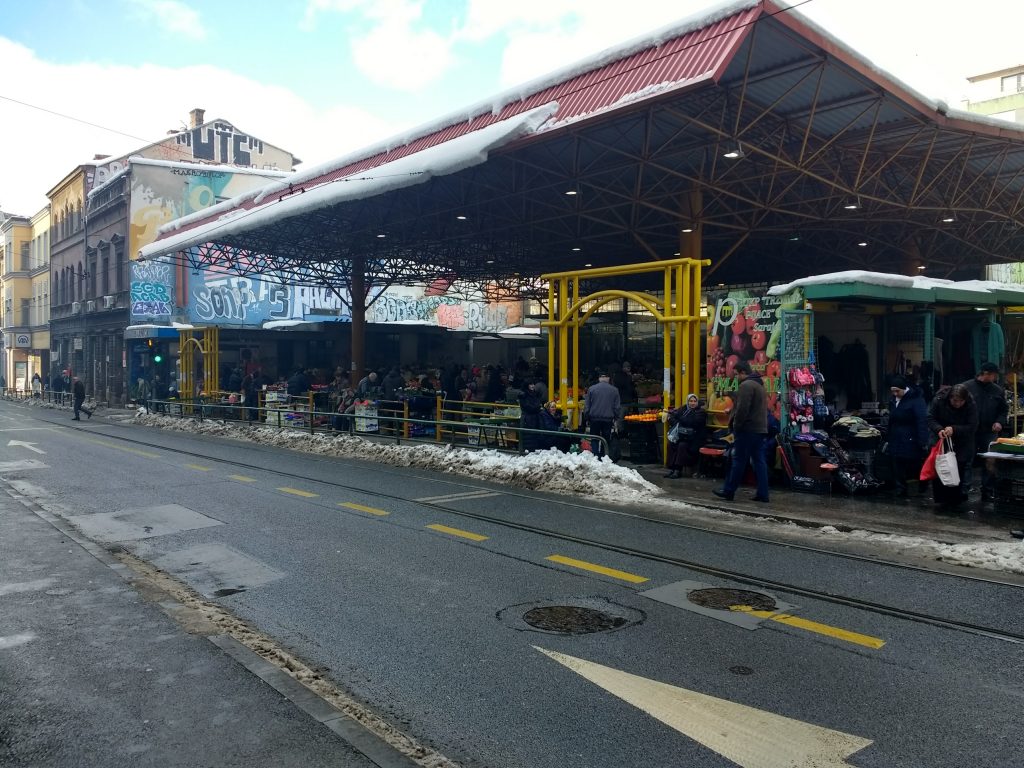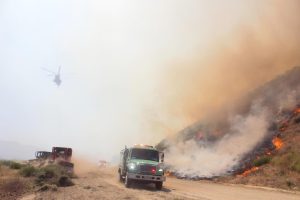Reflections on American Interventionism, Part II
February 5, 2018
This is the second in a pair of pieces reflecting on American Foreign Policy based on the experiences of the author in Successor States of the Former Yugoslavia. The first can be read here.
One of the best things about living in Sarajevo is the fresh produce. All around the city, and in other major cities throughout the Balkans, farmers bring fresh crops to farmers markets (in Bosnian “Želene Pijace”). For around $1, I can buy a kilogram (2.2 lbs) of fresh apples. All the vendors are kind and always offering deals of the day or to start a tab in case you don’t have enough Konvertible Marks on you. Many of them older, one can assume that they have been working at the market for decades. Relationships and trust are built in these markets and the communities they serve.
Living downtown had its perks. I resided just off of the main pedestrian street (Ferhadija) and could access everything I needed within a ten minute walk. Near me was the heart of Baščaršija, the old part of the city erected by the Ottomans. Located at the crossroads of Europe, where East meets West, Sarajevo is a tourism hub in the region.
Now imagine this all disappeared . Imagine a city starving from siege and cut off from the rest of the world for 1,425 days. Not only were Sarajevans pinned down by the Bosnian Serb siege, but artillery from the hills surrounding the city rained down day after day after day.
For the most part, the city has been rebuilt. There are modern shopping centers, thousands of cafes, skyscrapers, and museums However, you don’t have to look far to see reminders of the Siege. Scattered throughout the city are Sarajevo Roses, places where mortar shells struck and resulted in at least one death, scatter the city. They have been filled in with red resin and earned their name due to their unique shapes.
Seeing the Roses everyday desensitized me. I first attempted to walk around the Roses when I arrived in Sarajevo. I was shocked that people would nonchalantly stroll over the Roses, the marks of death that dot the Sarajevan urbanscape. Packs of tourists would congregate around the Roses, snapping photos while a tour guide attempted to tell the story of the Siege.
So what does this have to do with me buying produce? I always walked past a Sarajevo Rose on the way to the market, and at that point, I didn’t think much of it. I walked over dozens of Roses during my time in Sarajevo. It’s just a part of living in the city. It turns out that my local market was shelled twice during the Siege.
Known as the Markale Market Massacres, these two bombardments killed 111 people and injured 219 more. The first occurred today 24 years ago. The second was more than a year later in August of 1995. Coupled with the Genocide at Srebrenica, the second massacre was a factor that drove the international community, and the US, to ramp up direct involvement in the Bosnian War.
As opposed to NATO’s proactive engagement when bombing Serbia, the world watched and only stepped in after hearing about the worst atrocities in Europe since the Holocaust. When the bloody dissolution of Yugoslavia began, the world largely turned a blind eye. Occurring in the years after the collapse of the Soviet Union, the world rejoiced at the new status quo. No longer were there two opposing and war blocs. Now, the world could have peace.
Instead of using the new world order to facilitate peaceful transition, the international community stood idle while thousands were slaughtered, both on the battlefield and in civilian centers. Apparently, it takes genocide and massacres to get the attention of the US and her allies.
Even worse, the international community knew the severity of the war. War photographers followed the frontline and sent back photos and videos that aired on news networks. The United Nations sent Peacekeepers but gave orders not to attack unless attacked. Under their mandate, keeping peace meant observing . Even if innocents were being slaughtered in front of them, they could not act.
Does the United States and international community share some of the guilt? Are we, in part, responsible for the death and violence in the war? We had the resources and opportunities to enforce armistices and encourage dialogue over warfare, yet allowed tensions to flare up in this tiny region. We sent forces, tied their hands, and expected them to hold the lines only in certain areas.
Twenty years later, the scars of war are still fresh. Ethnic tension and economic stagnation have left a weakened and disheartened Bosnia. Once again, the choices of our government contributed to both the good (stopping armed conflict) and the bad (solidifying ethnic conflict). The muddled record of our intervention is prominent in the Balkan region. Experiencing the complexities firsthand is only one step in being able to understand the full consequences of foreign policy. Is it truly a success when we bring “peace” but not prosperity? Should we celebrate stopping more death instead of preventing open conflict in the first place? Is intervention after witnessing genocide and massacres a moral obligation? These are all open questions that America, for the foreseeable future, will have to grapple with and contemplate so long as we stand as an economic, military, and political world power.
Photo Credit: Alejandro Monzon








